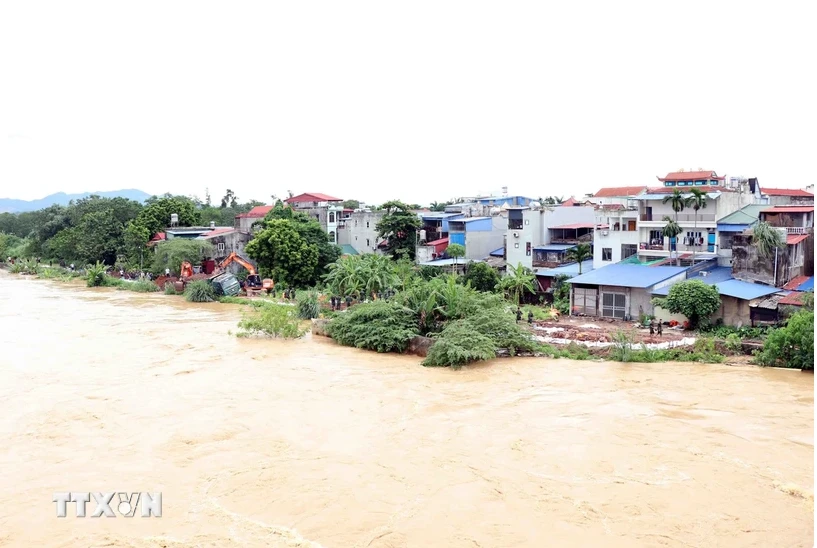US announces 1 million USD for immediate relief efforts after typhoon Yagi
Thursday, 12/09/2024 11:15 (GMT+7)
(CPV) - The US Mission to Vietnam, through the US Agency for International Development (USAID), is providing 1 million USD in immediate humanitarian aid to support Vietnam’s efforts to respond to the devastating impacts of Typhoon Yagi.
 |
| Typhoon Yagi has caused the serious flooding in some northern localities. (Photo: VNA) |
The assistance will be allocated to humanitarian partners to enable the provision of multipurpose cash assistance, shelter, and water, sanitation, and hygiene assistance, as well as non-food items in support of Government of Vietnam-led disaster assistance efforts across Vietnam.
This $1 million builds upon long-standing support to the government of Vietnam and the Vietnam Red Cross Society to strengthen resilience to climate change and the disaster response capabilities of communities across Vietnam. Over the past five years the US Mission to Vietnam, through USAID, has provided 7.7 million USD in emergency response and disaster preparedness assistance - including to address needs generated by floods and typhoons and build the capacity of local first responders across Vietnam.
On September 7, Typhoon Yagi made landfall over Northern Vietnam, one of the most powerful the country has witnessed in decades with adverse impacts to 26 provinces. As of September 10, the typhoon and torrential rain in its aftermath have caused flooding, landslides, and infrastructure collapse that have killed 143 people with more than 800 injured and 58 missing, and as of September 9, damaged or destroyed some 48,000 homes and approximately 184,000 hectares of agricultural land.
With more heavy rain forecast in the coming days, USAID’s disaster experts continue to monitor humanitarian needs in close coordination with local emergency authorities and partners on the ground. USAID humanitarian experts on the ground are participating in ongoing assessments to ensure US assistance rapidly reaches populations in need.
For decades, USAID has worked with the Government of Vietnam to improve national disaster response, preparedness, and risk reduction capacities. This partnership aims to better prepare communities across the country for the increased frequency and intensity of climate-related disasters./.
BTA